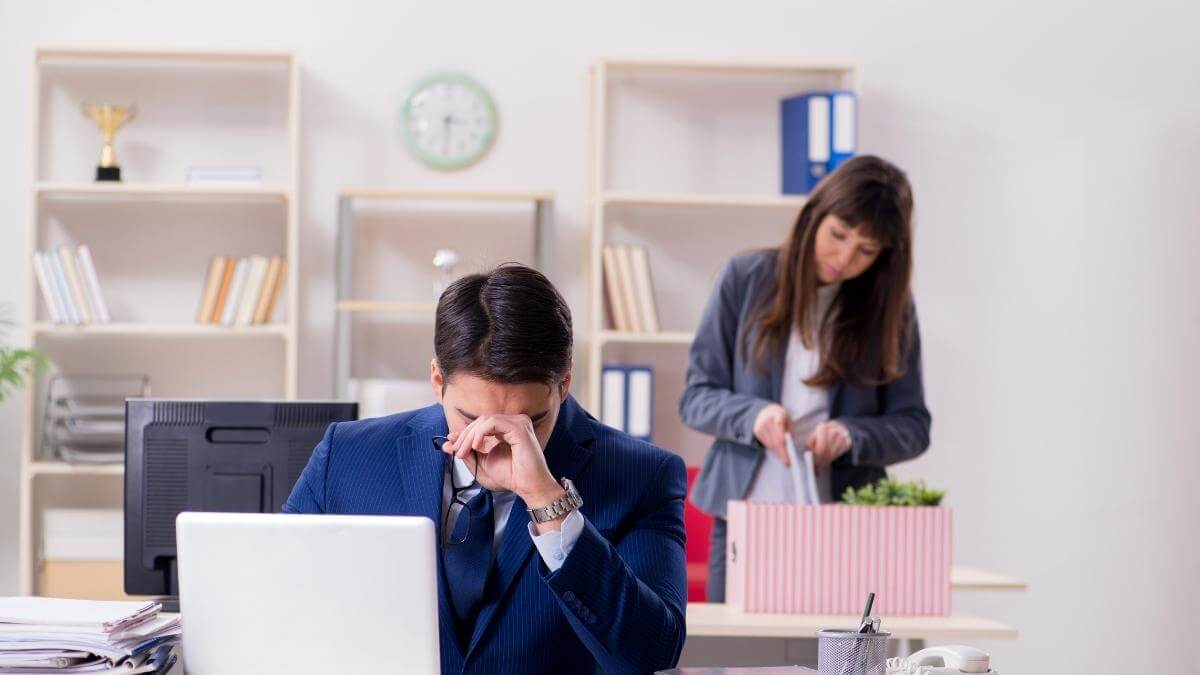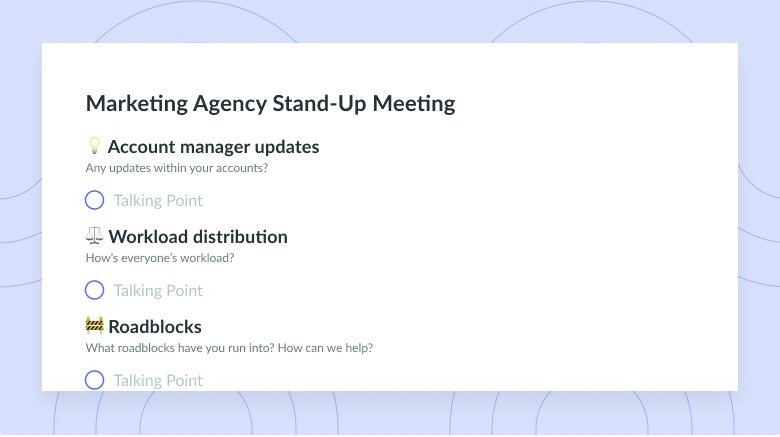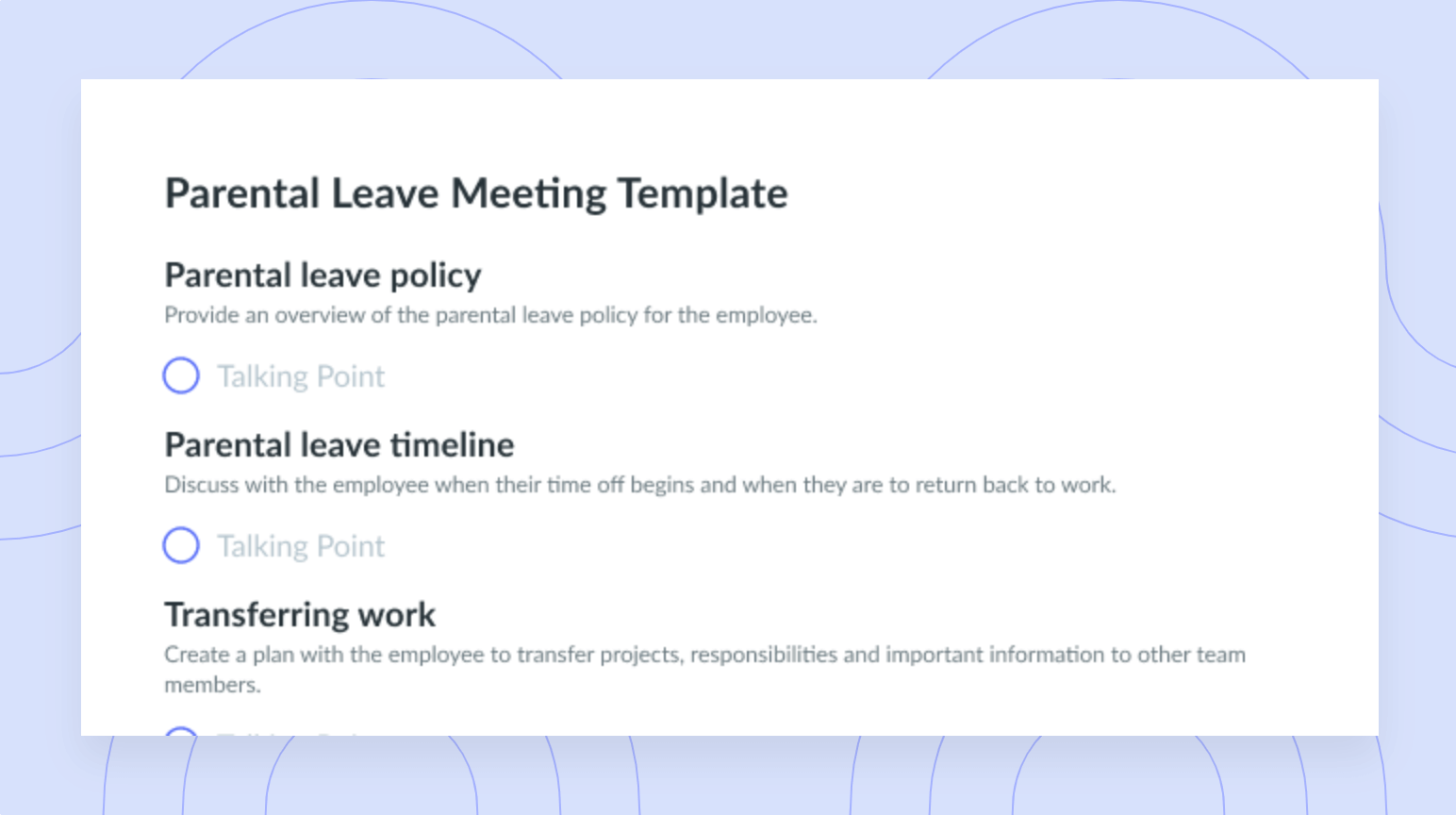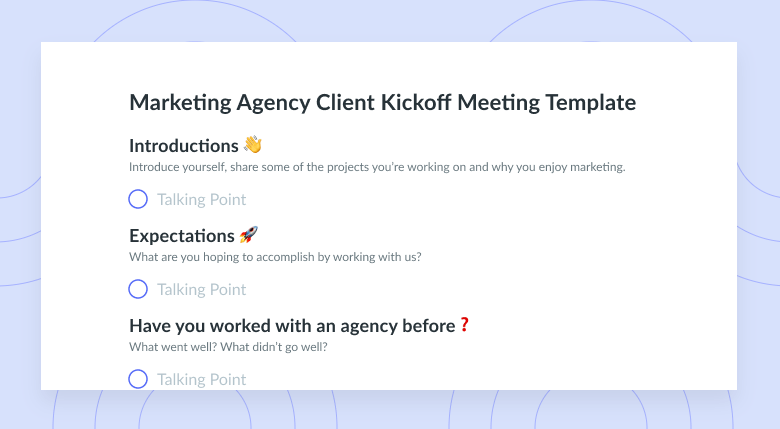Quiet Quitting: What It Is and Signs to Look for
Detect quiet quitting by monitoring performance & identifying employees doing the minimum. Learn about quiet quitting and get a free template!
Technological advancements and a post-COVID-19 climate have both contributed to a spike in quiet quitting. Employees’ shifting priorities and enlightened perspectives are continuing to present hurdles for employers that are seeing an increased number of disengaged employees quietly quitting.
- What is quiet quitting?
- Why are people quiet quitting?
- Signs of quiet quitting at work
- How to prevent employees from quiet quitting
What is quiet quitting?
Quiet quitting was recently popularized on TikTok due to a video explaining the phenomenon that went viral. Quiet quitting refers to the practice of mentally checking out and living by the realization that your worth as a person is not defined by your labor. Unlike career-oriented individuals, the quiet quitter will not subscribe to hustle culture and will instead do the bare minimum. The employee in question will continue to work, but they will do no more than what’s expected of them. A quiet quitter will no longer go above and beyond and will only do what they have to before moving on to a new role.
Formerly known as employee disengagement, quiet quitting is becoming increasingly more popular amongst millennial and generation Z employees that are looking to rewrite what it means to be a dedicated employee. The phenomenon continues to catch on and infuriate managers as employees and managers alike continue to navigate a post-pandemic workforce that makes it harder than ever to establish a work-life balance. And as Forbes contributor Bryan Robinson, Ph. D., explains,
“When employees are not functioning fully, it can become an invisible drain on a company’s engagement and productivity”
Why are people quiet quitting?
Quiet quitting can be quite controversial. While some people recognize quiet quitting as a long-overdue movement that puts control back into the hands of the employee, others believe that it’s a generational downfall. Those behind the quiet quitting movement subscribe to the belief that they shouldn’t have to go above and beyond what they’re paid for. In a world where hustle culture runs rampant, these individuals believe in doing their job as described—otherwise described as “acting their wage”—instead of subscribing to hustle culture.
People are quietly quitting as they continue to embrace the mindset that work shouldn’t take over our lives. In a post-pandemic world where many people have gotten a taste of working with more freedom and prioritizing what really matters, more and more people are beginning to realize that work isn’t everything.

Prevent employees from quiet quitting
Prevent quiet quitting by levelling up your meeting habits to boost engagement and productivity with a collaborative meeting agenda. Try a tool like Fellow!

Signs of quiet quitting at work
- Poor teamwork
- Disengagement in meetings
- Lack of enthusiasm at work
- Isolation from other team members
- Lacking performance
1Poor teamwork
Employees that are practicing quiet quitting will be poor team players. Because they are only inclined to do the bare minimum and will only be doing what’s necessary to get by or to retain their positions, they will not be inclined to collaborate or be team players. If you notice there are employees on your team that aren’t working well together, it could be because one or more of them have mentally checked out. These employees may also feel as though teamwork goes above and beyond their responsibilities or they may believe that they deserve a higher wage before they can justify prioritizing collaboration or teamwork.
2Disengagement in meetings
Being disengaged is a tell-tale sign that someone has mentally checked out. While one or more of your teammates may be disengaged because of other factors like a hard day at work, burnout or even personal problems that have permeated their work life, they may also be disengaged in an attempt to phase out their participation. Signs of disengagement include poor listening, a lack of attentiveness, little to no contributions during the meeting, or showing up late. Employees that are extremely disengaged may even fail to show up to meetings altogether.
3Lack of enthusiasm at work
If your teammates don’t feel motivated at work, it may mean that they’ve outgrown their roles, they don’t feel they can learn or grow within their role, or they don’t feel valued or respected. A lack of enthusiasm is a tell-tale sign that someone may be quietly quitting. If you notice your employees aren’t getting their work done on time, contributing to your shared goals, or speaking up or asking questions in meetings, it may mean that they are losing motivation. If your employees don’t feel as though they are being rewarded for their work, they may begin to lack enthusiasm.
4Isolation from other team members
When employees begin to disengage, nothing is off-limits. In addition to limiting their responsibilities, employees may isolate themselves from other team members because they no longer value these working relationships or simply because they no longer see collaboration as part of their roles. As a result, their working relationships with their team members will also begin to suffer.
5Lacking performance
While there may be a number of factors that contribute to poor performance, this is one of the most prominent signs that one of your employees may be quietly quitting. If your teammate who is exhibiting these behaviors is normally eager and high performing, their lack of performance will be an extremely big change. You may be used to them hitting every benchmark and knocking shared goals out of the park, but if they become disengaged, you may begin to notice that they’re only doing the bare minimum.
While quiet quitting may be a reflection of the employee and their desire to find a better work-life balance, they may also be burned out or lack motivation due to a chaotic environment. If you notice multiple team members are doing the bare minimum or are becoming disengaged, it may be a sign that you have to make some changes from the top down.
How to prevent employees from quiet quitting
- Offer competitive compensation
- Listen to employees’ wants and needs
- Boost employee engagement
- Create a healthy work culture
- Host regular one-on-one meetings
1Offer competitive compensation
Quiet quitting often occurs when employees feel as though they aren’t being properly compensated for the work they do. More and more employees are beginning to “act their wage,” which means only doing what they believe they are getting paid to do. This means that they will not be going above and beyond or stepping out of their scope if they feel as though they aren’t being compensated accordingly. Offering competitive compensation is an excellent way to demonstrate that employees at your organization are valued and compensated for the work they do.
2Listen to employees’ wants and needs
If you don’t listen to your employees’ wants and needs, you may be surprised when you notice your team members quietly quitting. Listening to your employees’ concerns is a great way to stop quiet quitting before it happens. If you’re able to stop deterrents in their tracks and provide immediate solutions, you may be able to re-engage your employees before they check out mentally. If your teammates feel as though they’re being listened to, they may be more inclined to work hard and push through any struggles.
3Boost employee engagement
While boosting employee engagement isn’t always easy, it definitely pays off in the long run. There are a number of ways you can boost employee engagement, like by offering incentives, providing growth opportunities, and providing employees with autonomy. Empowering your team members with the tools, knowledge, and means necessary to do their jobs well will ensure they’re engaged and motivated to do their best work.
4Create a healthy work culture
A healthy work culture improves teamwork, boosts morale, increases productivity and efficiency, and enhances retention, which is extremely important in a generation of quiet quitters! Creating a positive work environment also helps reduce stress and burnout amongst employees. The more positive the environment, the less likely your team members will become disengaged and check out.
5Host regular one-on-one meetings
One of the most effective tactics that you can leverage to strengthen relationships with your employees is hosting regular one-on-one meetings. These check-ins serve as safe spaces where you and your employees discuss any wins as well as any areas that may need improvement. If your teammates bring forward concerns during these check-ins, it’s your job to act accordingly and provide solutions. Leveraging this meeting template will ensure your next one-on-one is productive and effective:

Quiet quitting is plaguing the workforce
In conclusion, quiet quitting is a phenomenon that is plaguing organizations in a range of industries. If you don’t act soon and create a workplace that values your employees, you’ll lose them. It’s important to compensate your employees fairly, while simultaneously creating a positive workplace that values everyone’s time and effort. If you don’t create an environment that fosters a positive work-life balance, your employees will check out and go elsewhere.














![What? So What? Now What? [Reflection Meeting] Template](https://fellow.app/wp-content/uploads/2021/08/What-So-What-Now-what-preview-v2.png)













